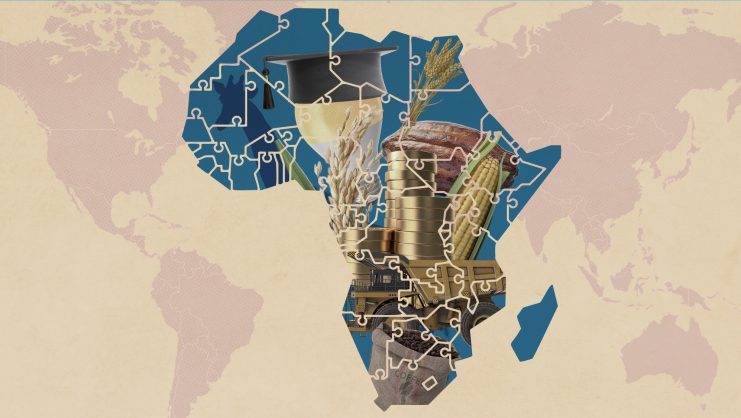Rapidly evolving digital technologies are creating a new social, economic, and business environment where new products and services have to be brought to market faster than ever before. To meet this level of demand, companies must adapt to much shorter design and production times. In today’s volatile, uncertain, complex, and ambiguous (VUCA) environment, the three basic needs for any business that wants to stay competitive are flexibility, adaptive capacity, and change management.
Agile is a philosophy embodied in a set of methodologies that help companies not only adapt to change but also incorporate it into their processes and benefit from it.
Two of the fundamental concepts in agile methodologies are iteration and prototyping. When an agile organization creates a product, it does so by developing prototypes—simple, imperfect models that are gradually improved and completed in successive iterations. Each iteration is a short development period during which a prototype is generated. This work method facilitates continuous improvement and generates value throughout every phase of the project. Since each prototype is a simplified version of the final product, it could potentially be brought to market, generating value for the company.
This approach creates a trustful relationship with the customer. Although a prototype is an incomplete product, it allows the customer to see, touch, and assess progress towards the desired result throughout the process.
If unforeseen circumstances interrupt the process, the customer always has, at the very least, the most recent prototype created by the development team. Despite being a simplified version of the product, this model could conceivably be commercially released. Therefore, there is always a return on the investment and whatever work is completed will be preserved (rather than being lost, as it would be under a more traditional product-development methodology).
The goal is to be prepared to react to the pace of change in the environment. Highly competitive markets, rapid technological and social changes, and political and economic uncertainty are factors that can have a long-term impact on any business strategy. It is therefore essential to be flexible and adapt to the sorts of eventualities that are becoming increasingly frequent in all companies and sectors.
The idea is for each employee to become the CEO of the product or service they are working on and make it their own, sharing ideas with the customer and actively contributing to the design and creation process.
The cultural challenge
When the agile methodology is incorporated into an organization, one of the main factors to consider is the cultural change that this new way of working requires. The agile mindset is incompatible with the traditional vertical or silo-based structures found in many companies and sectors.
The agile philosophy is based on the creation of self-managed teams that work closely and directly with customers to ensure that the prototypes created in each iteration are exactly what the customer needs and will create value for the company.
As with any major cultural transformation in an organization, the support of the top brass is essential when it comes to creating this new work environment. In a study of the tool VersionOne that looked at failed agile implementations, 63% of survey respondents blamed the failure on a clash between the company’s culture and the agile philosophy.
In the agile vision, bosses and supervisors must transfer responsibility for the process to the work teams and focus on cultivating a work climate and conditions that will allow the teams to proceed as autonomously as possible.
The human aspect and the empowerment of the teams define the sort of leadership that is necessary for the adoption of agile operational procedures.
The impact is noticeable not only in the work method but also in the motivation and involvement of each team member. The idea is for each employee to become the CEO of the product or service they are working on and make it their own, sharing ideas with the customer and actively contributing to the design and creation process.
In parallel, after the workflows are defined and implemented, the team members see an increase in their capacity for empowerment, creativity, and learning, thanks to the integrating effect of this modus operandi. With each iteration, an agile organization becomes more creative, more resilient, more sustainable, and higher-performing.
The creation and maintenance of high-performance teams is one of the bases of the adoption of agile methodologies. But it is also one of the most important results of this approach, not to mention one of the main challenges associated with its implementation.
Organizations need not be large in order to incorporate agile methodologies. In fact, agile is the most widely used development methodology in startups and entrepreneurial ecosystems.
The importance of the journey
As noted above, the added value of the agile approach lies in the journey that takes place before the final product is launched: the chain of trial and error, the prototypes and iterations, the work done jointly with the customer, and the communication among team members and with the customer. In short, the journey is a process of learning by doing, iterating, adapting, and continuously improving.
A fundamental aspect of this work method is the fact that value is added from the outset and with each step along the way. At every point in the process, there is always a prototype. While it may not have all the characteristics and functionalities of the final product, each prototype is potentially marketable. This ensures that part of the investment could generate returns if the project were to be canceled at any time during its life cycle.
Organizations need not be large in order to incorporate agile methodologies. In fact, perhaps because of its flat hierarchy, agile is the most widely used development methodology in startups and entrepreneurial ecosystems.
When the agile methodology is incorporated into an organization, one of the main factors to consider is the cultural change that this new way of working requires.
A philosophy and a mindset
Agile is a philosophy of values embodied by various methodologies applied in different areas, including scrum, extreme programming (XP), kanban, lean, crystal, and feature-driven development (FDD).
The agile philosophy has been rapidly adopted since its creation in 2001. According to the Project Management Institute, 71% of organizations worldwide now use some variant of agile—a figure that clearly conveys the value of this approach.
Even so, being agile doesn’t necessarily guarantee success. The flexibility and adaptive power of the agile approach entail costs—in terms of both cultural change and implementation—that companies must consider carefully before taking the plunge. In some areas of work, this system simply isn’t necessary; in others, agility is a master key that can open many doors. Agile projects can coexist with projects managed with more traditional approaches, such as the waterfall model. In fact, according to LiquidPlanner, more than half of manufacturing organizations depend on a combination of these two methodologies.
© IE Insights.











